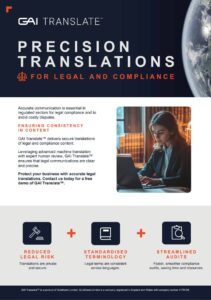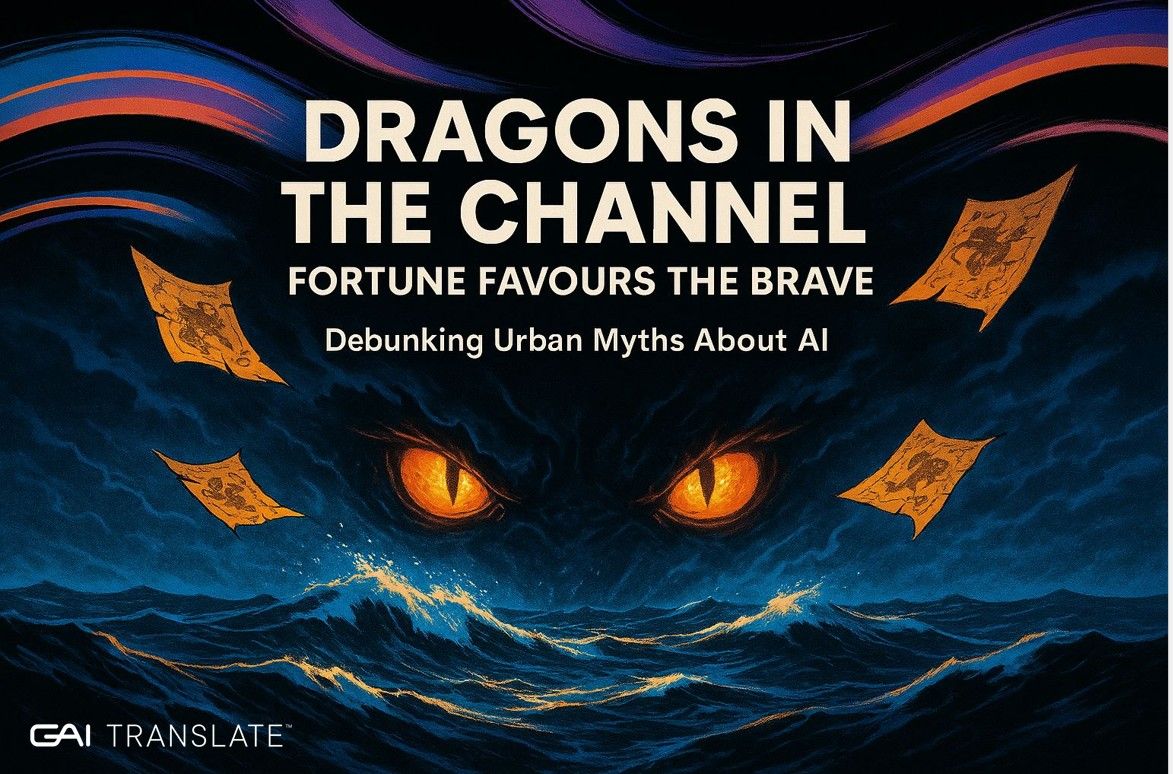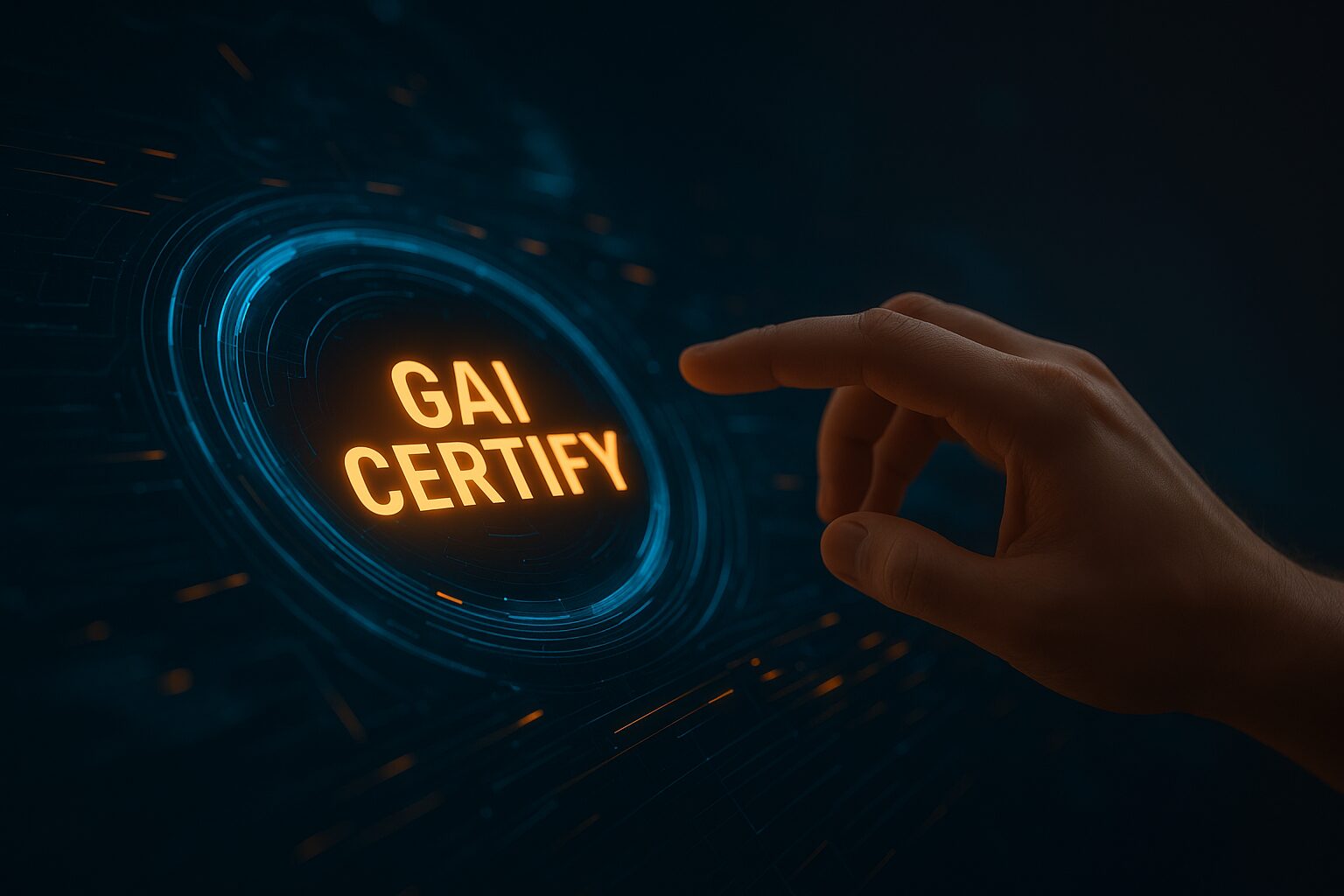In high-risk industries such as legal and compliance, accuracy and efficiency are key. From screening high volume contracts to navigating complex regulatory landscapes, legal professionals often grapple with an enormous amount of multilingual information.
Traditionally, human translation has been the cornerstone of this process. However, the inherent limitations of manual translation – significant costs, lengthy turnaround times, and scalability challenges – are increasingly apparent in today’s fast-paced global environment.
The emergence of LLMs, AI, and machine translation technologies offer a powerful alternative to traditional human translation. Able to handle high volumes of content quickly – and increasingly reliably – machine translation tools enable legal professionals to overcome the hurdles usually associated with manual translation when handling multilingual content.
This article explores the benefits of machine translation tools in the legal and compliance sectors.
1. Speed and efficiency in legal processes
Time is often critical in legal proceedings. Machine translation offers near-instant translation of key documents such as contracts, depositions, and regulatory guidelines, accelerating crucial legal processes in the following ways.
- Faster due diligence and cross-border transactions: In mergers and acquisitions (M&A), international arbitration, or any cross-border deal, rapidly translating foreign language contracts, financial statements, and regulatory filings enables quicker assessment of risks and opportunities, thus accelerating decision-making and deal closures.
- Real-time multilingual communication: Machine translation facilitates instant written communication during international arbitrations, mediations, and client interactions.
- Quicker review: Machine translation speeds up the review of electronically stored information (ESI) in eDiscovery processes, allowing legal teams to quickly identify relevant documents from massive multilingual datasets, rather than sifting through them manually.
2. Cost savings for law firms and compliance teams
The financial implications of relying solely on human legal translators can be substantial. Machine translation offers significant cost advantages.
- Reduces reliance on high-cost legal linguists: For routine or high-volume translation tasks, such as translating non-disclosure agreements (NDAs), standard contracts, or internal compliance reports, machine translation substantially reduces the need for expensive human legal experts, reserving their specialised skills for critical documents.
- Reduces overhead in large-scale document review: Machine translation streamlines processes like eDiscovery and M&A due diligence, minimising translation-related expenses.
3. Scalability for global legal operations
The volume of legal and compliance documentation can be overwhelming, especially for organisations operating across multiple jurisdictions. Machine translation provides the scalability needed to handle these demands.
- Handles high-volume document translation: Complex litigation, large-scale regulatory inquiries, or global compliance initiatives often generate enormous amounts of information. Machine translation can process these vast datasets quickly, ensuring that legal teams are not overwhelmed by translation backlogs.
- Supports multinational corporations: Machine translation enables multinational corporations to maintain consistent legal and regulatory compliance across different regions, ensuring internal policies, legal notices, and training materials are accessible and understood globally.
- Eliminates bottlenecks: Avoids delays caused by the limited availability of human legal translators for large projects.
4. Consistency in legal terminology
Accuracy in legal language is essential. Machine translation ensures consistency in the use of legal terms and phrases.
- Customisable legal glossaries: Allows firms to apply their own specific terminology to translations, ensuring legal and practice-specific consistency.
- Reduces human errors: Different human translators may interpret the same terms with subtle variations. Machine translation, when properly trained and configured, mitigates these inconsistencies, leading to a more uniform and reliable output, crucial in legal documentation.
5. Enhanced compliance and regulatory alignment
Staying abreast of changing regulations across different languages is a big challenge for compliance teams. Machine translation facilitates this in the following ways:
- Quick translation of changing regulations: Enables rapid understanding and implementation of updates to laws like GDPR and Anti-Money Laundering (AML) directives.
- Supports multilingual compliance efforts: Helps organisations maintain adherence to regulations in every country they operate in.
- Reduces risk of misinterpretation: Minimises the potential for errors arising from the nuanced interpretation of legal texts in different languages.
6. Security and confidentiality
Legal documents often contain highly sensitive and privileged information. Reputable machine translation tools have security measures built in.
- Enterprise-grade encryption: Protects confidential data throughout the translation process.
- Audit trails and access controls: Provides a transparent and compliant environment for data handling.
7. Integration with legal tech and workflows
Modern legal practice relies heavily on technology to enhance efficiency. Machine translation solutions are increasingly designed for seamless integration with existing legal tech infrastructure:
- API integration: Application Programming Interface (API) integration allows machine translation capabilities to be embedded directly into existing legal software, document management systems, eDiscovery platforms, and CRM systems. This enables automated translation of documents as they are entered, shared, or reviewed, tailored to specific legal processes. GAI Translate offers a seamless API integration to your CRM, software and websites – contact us for more information here.
- Streamlines global compliance reporting: the translation of compliance reports for international stakeholders can be automated, ensuring timely and accurate communication of regulatory adherence across different jurisdictions.
When human translation is still necessary
While AI-powered translation offers significant advantages, human expertise remains crucial in certain situations.
- High-stakes legal filings: Documents requiring official certification, sworn translations, or carrying significant legal weight in court (e.g., patent applications, contracts undergoing judicial review, affidavits) often require human translation for legal validity.
- Contracts with nuanced cultural or jurisdictional implications: Agreements where subtle cultural differences, customs, or specific jurisdictional interpretations could impact the legal meaning or enforceability of clauses can benefit from expert human interpretation.
Conclusion
Machine translation is transforming the legal and compliance sectors. It streamlines high-volume tasks like due diligence and eDiscovery, ensures consistent terminology across global operations, and strengthens compliance efforts, all while maintaining data security. This is crucial as it allows legal professionals to operate more efficiently and focus human expertise on the most complex legal challenges.
GAI Translate, a secure precision translation engine, delivers these benefits directly to the legal industry. Working with legal and compliance partners like Tenet Law and Les Ambassadeurs Club, it offers high-volume text and document translations, with an expert review feature to cross-check for validity, all within one click.
Contact us for more information, or start a 14-day free trial with us today.
More resources:
SHARE THIS ARTICLE
RELATED RESOURCES
Busting the big 3 myths in AI adoption: what are you doing wrong with AI?
The conversation about adopting AI tools to translate is clouded by myths - myths that create risks and missed opportunities for global businesses. This week, Be the Business, an organisation that champions...
5 MIN READ
Certified vs. generic quality: why smart leaders choose certified translation to de-risk
The way we do business today has changed drastically. Companies are more digitised and interconnected. Organisations are facing greater risks at an increased velocity. The regulatory environment is becoming ever...
4 MIN READ
Eight ways GAI mitigates your mining risks
Mining is one of the most dangerous occupations in the world. According to research by the Lloyd's Register, one in five people in the sector was harmed at work...
5 MIN READ
Busting the big 3 myths in AI adoption: what are you doing wrong with AI?
The conversation about adopting AI tools to translate is clouded by myths - myths that create risks and missed opportunities for global businesses. This week, Be the Business, an organisation that champions...
5 MIN READ
Certified vs. generic quality: why smart leaders choose certified translation to de-risk
The way we do business today has changed drastically. Companies are more digitised and interconnected. Organisations are facing greater risks at an increased velocity. The regulatory environment is becoming ever...
4 MIN READ





